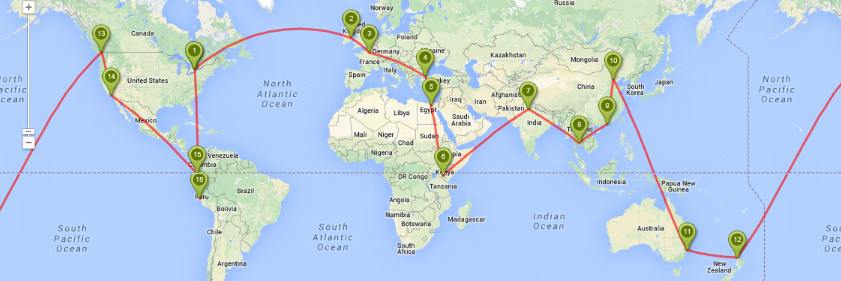
The first part of our adventure to Tulum began on our journey to the ruins as we took public transit. The locals use white vans known as collectivos to get around, similar to our city buses. It was a great way to get an insight into the everyday lives of people who live in this part of Mexico. It was also crazy to watch the collectivo driver going 140km/h in a 70 zone! This was a fun start to our Mayan adventure and allowed us to get to and from the ruins in an authentic way.

We arrived at Tulum and went in search of a guide to give us the history of the city. The first guide we encountered gave us a relatively high price, so we kept walking. As we got closer to the entrance, the price for a guide went down! We ended up getting a great deal and a knowledgeable guide, Pedro.



Tulum is not the original name of the city. The name Tulum means stinky ground; archeologists called it this after the numerous swamps found around the area. It was later discovered that the Mayans named it Zama, which means “place of the sunrise”. Tulum is the smallest and most recently built of all the Mayan cities in Mexico. The city’s planners chose its location for defensive purposes. They surrounded three sides of the city with guarded walls, while the remaining side faced the ocean and high cliffs. Only select individuals were allowed to reside within the walls. People of lower class lived outside and people of higher class lived inside. We also learned that only the higher class were referred to as Mayans.



Due to its proximity to the ocean, many people used Tulum as a trading port. In fact, it was one of the most important ports on the East Coast. People from other tribes located in South America would travel by canoe to Tulum in order to trade. One of the most important goods to the Mayans was honey. Since Tulum had access to honey through traders, the patron god of the city was the god of honey. Artisans depicted this god all over the ruins, carving his image over doorways. They portrayed him with his feet over his head, symbolizing his descent to earth to watch over the Mayans in Tulum.

One of the most common features in Mayan architecture is the use of the Mayan arch. The weight of the building materials is distributed across a keystone over the doorway. This made the doorway into a triangular shape and was stronger than the “traditional” rounded arch.

Another piece of Mayan “technology” were stones that were used to grind corn into flour. Corn was one of the most important crops and even had a place in their mythology. The Mayans believed that the creator god threw corn of different colours down to earth from the sky, and when people ate this corn, their skin turned to the same colour. This was their explanation for why people had different skin colours.

In the past, the city coloured its buildings turquoise to blend in with the ocean. Despite its openness to trading with outsiders, warring tribes necessitated the city’s defense. Today, the colour has worn away but there are still areas of coloured murals that remain.



The Mayan people chose the location of Tulum not only for the defensive front provided by the ocean and cliffs, but for the access to drinking water. There are small water holes formed by underground rivers of freshwater called cenotes. Without these cenotes, there would be no drinking water or water for crops. Not all cenotes were used for drinking water if there were a number of them in an area. Mayans would also use them as burial grounds. In their mythology, the cenotes were the mouth of a monster leading to the underground, back into the earth. The Mayans believed that the stalactites and stalagmites inside the cenotes formed the fangs of the monster. Only the most important and highest-ranking Mayans received burials in this manner.

One of the most interesting buildings in my opinion is the lighthouse. In addition to the cliffs providing defense from the ocean side, there is a coral reef that would cause any ships that go over it to become stuck or broken. There is, however, a place where the water from the cenote empties into the ocean and freshwater mixes with saltwater. At this point, no coral can grow, creating a gap in the reef. The lighthouse aligns with this gap to help people arriving from the water avoid the reef, providing them with guidance to safely reach the port. This alignment also ensures that the sun shines through its window on the winter solstice, signaling to farmers the change of season. This is very similar to Stonehenge, which was built to be aligned with the sun on the summer and winter solstice.



These ruins made us think of the ones we visited in Peru at Saqsaywaman. It was fascinating to see the difference between Incan and Mayan construction methods. In our opinion, the Incas had more advanced building techniques due to the precision of the stones fitting together. We think this may be because the Mayans were too busy observing the stars and focusing on astronomy!


Leave a Reply